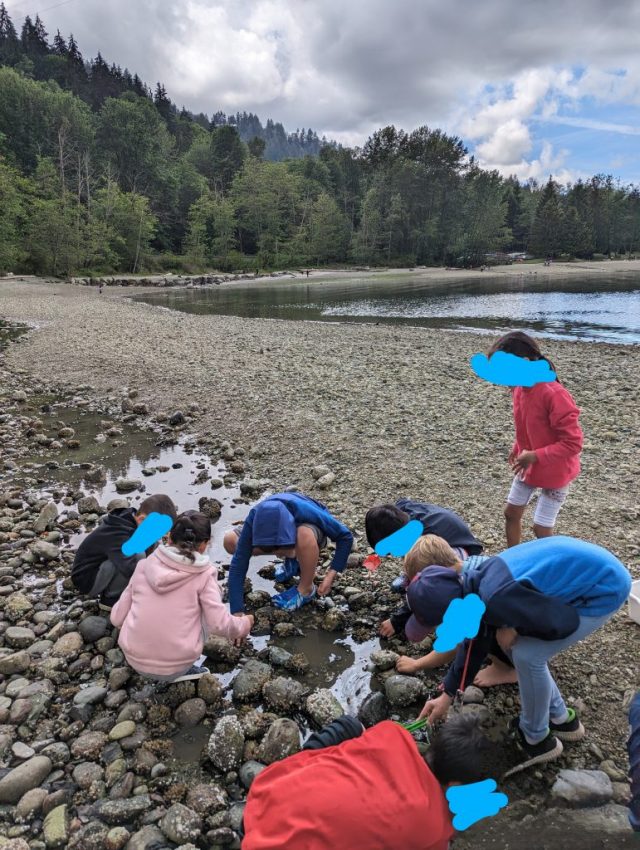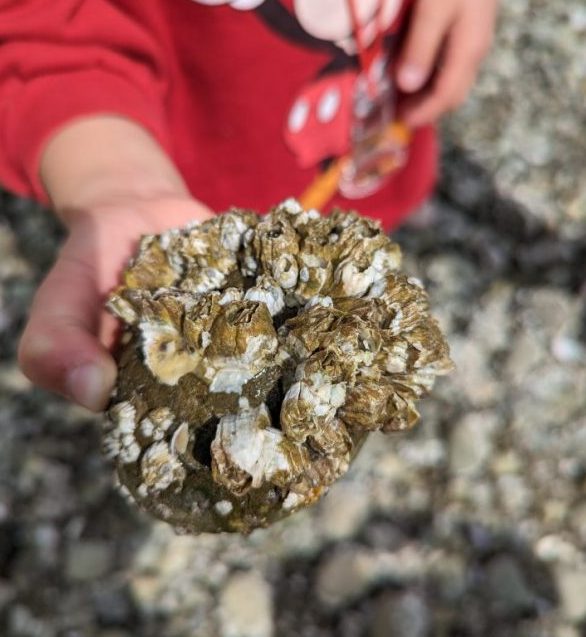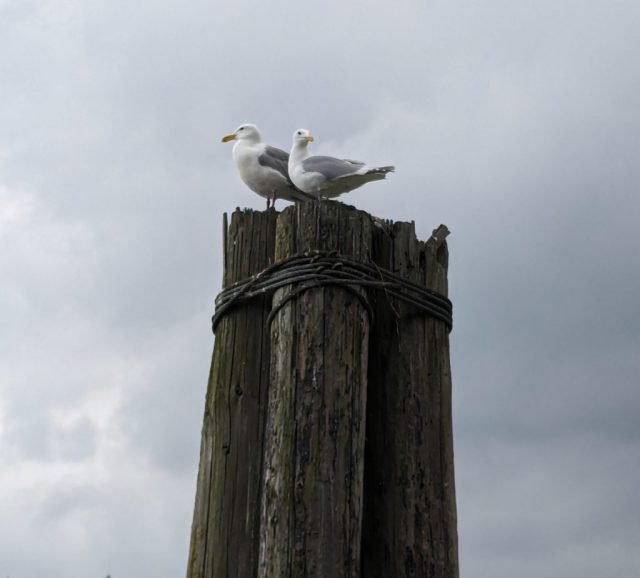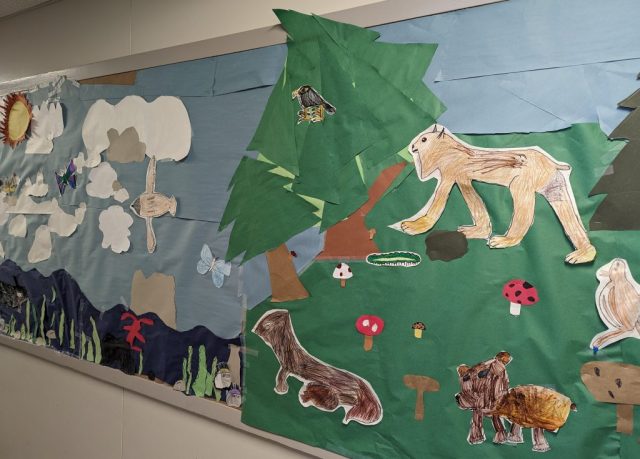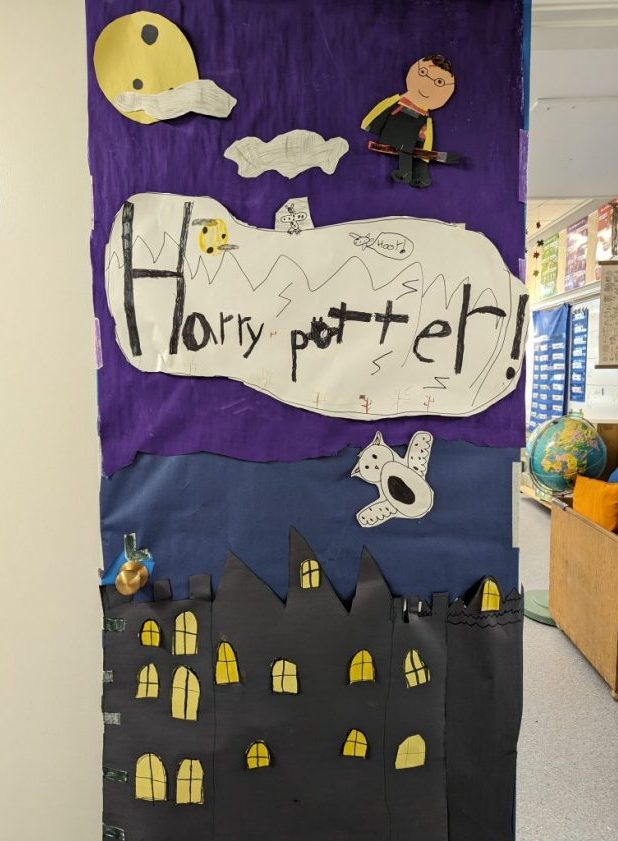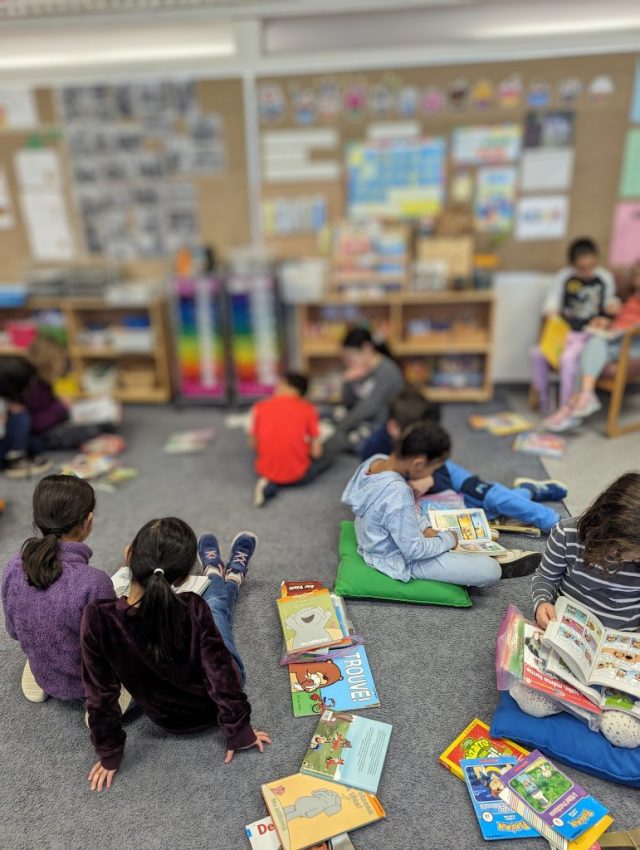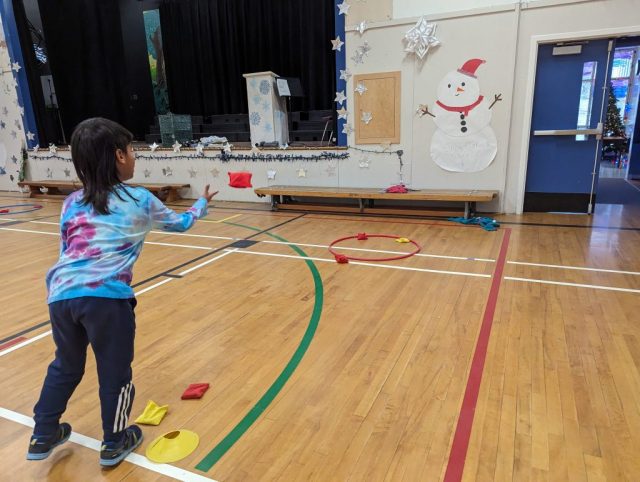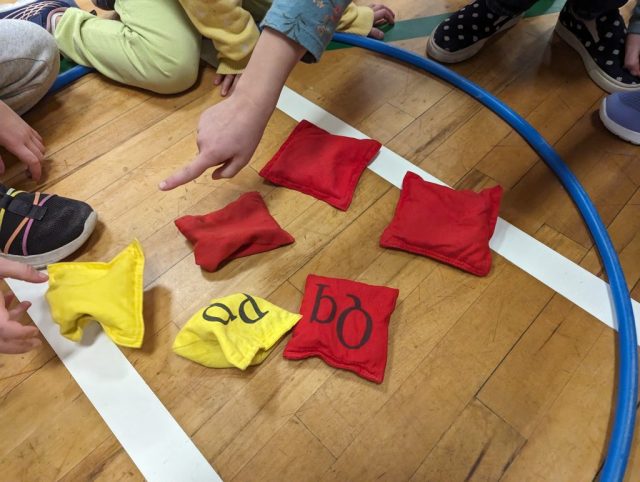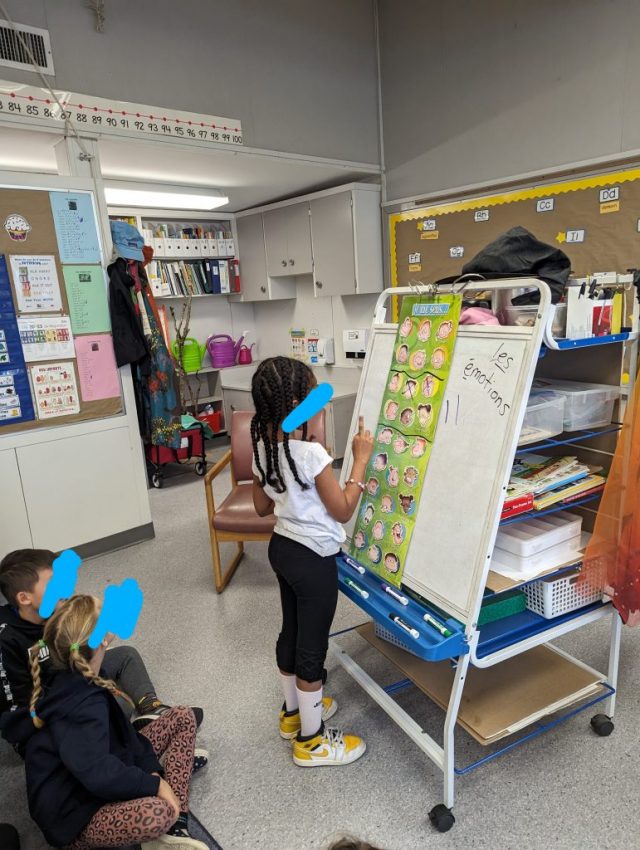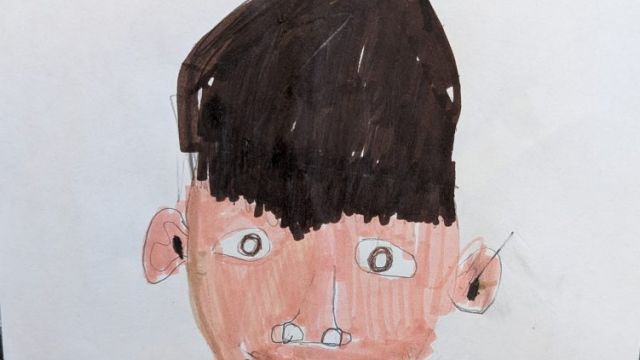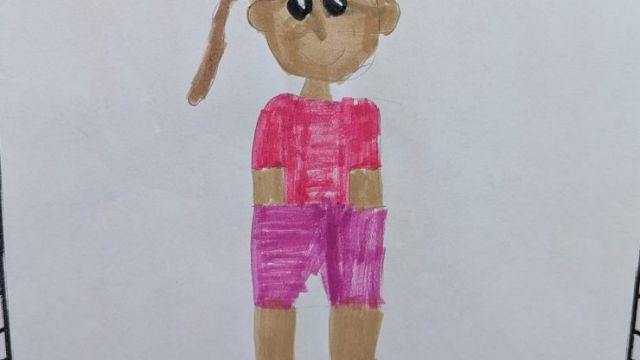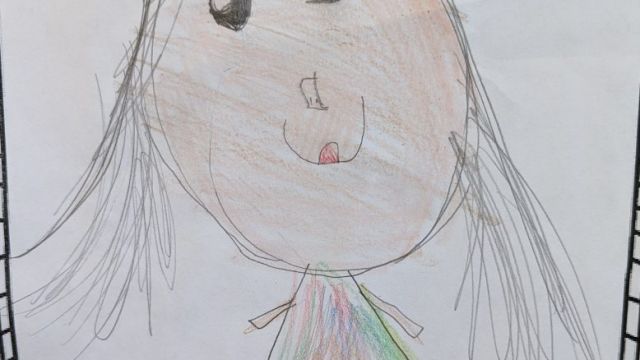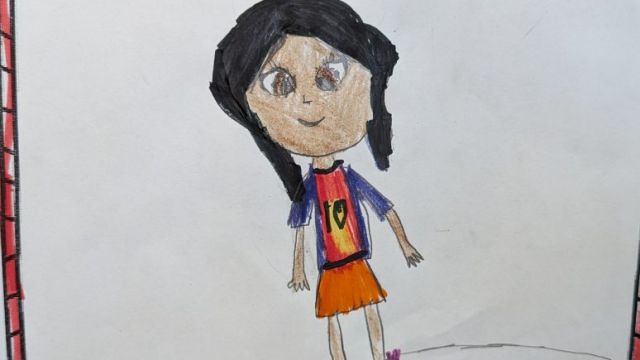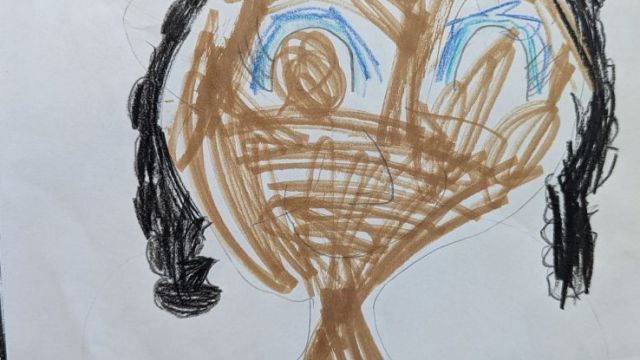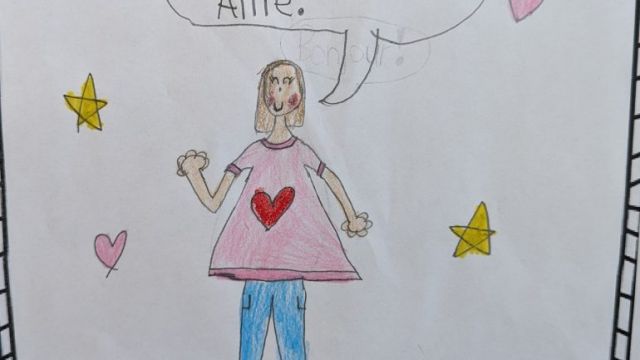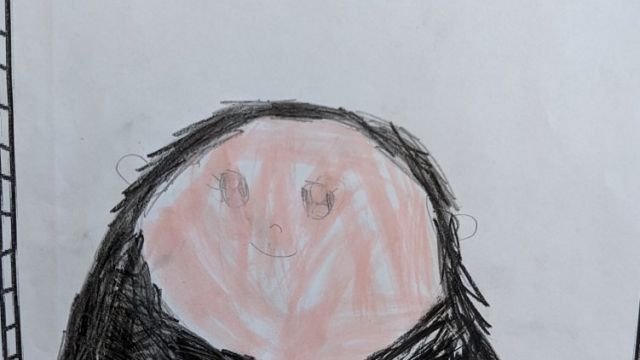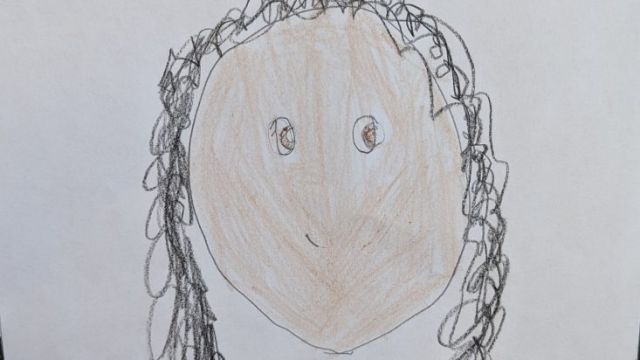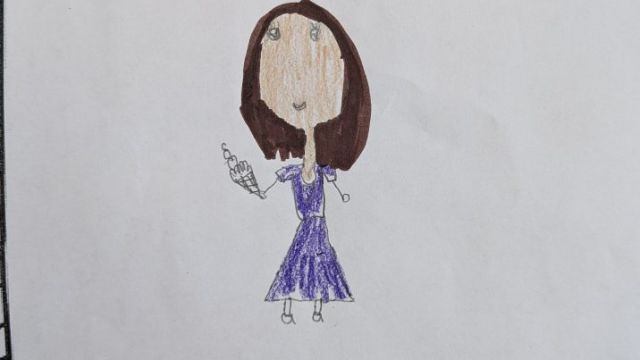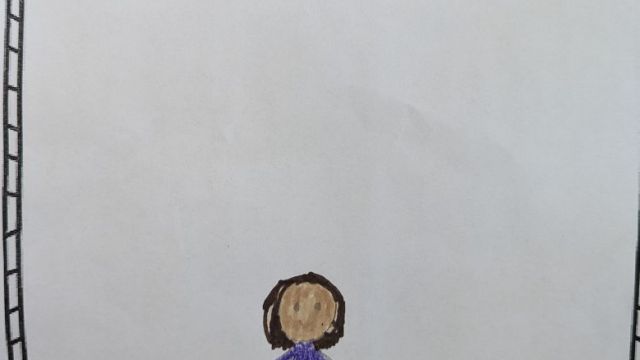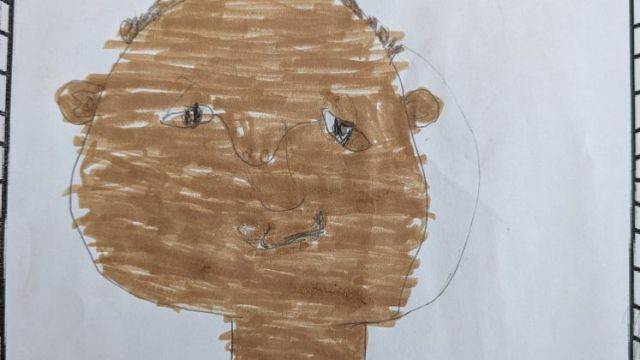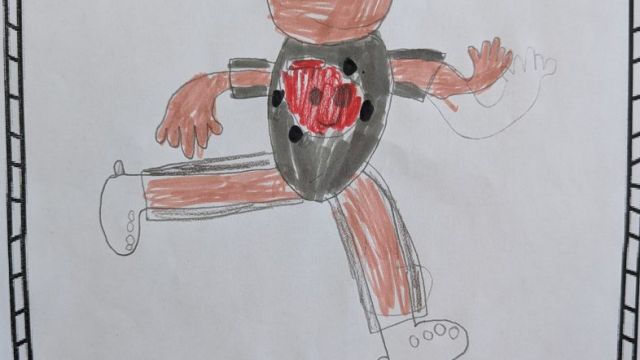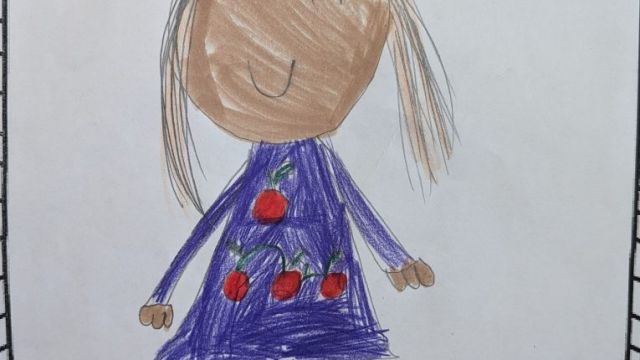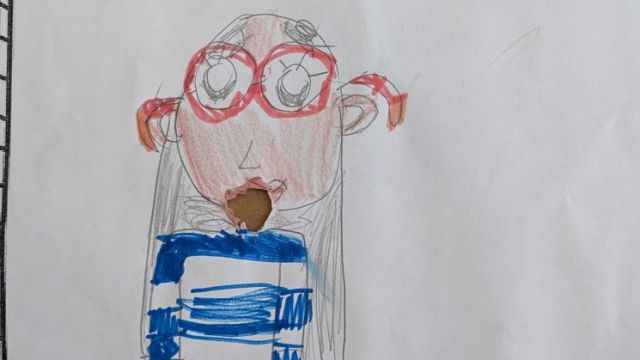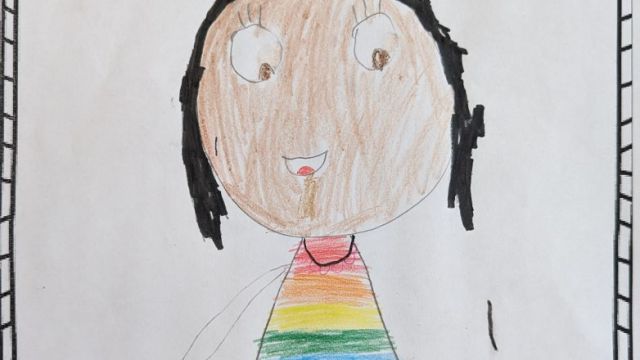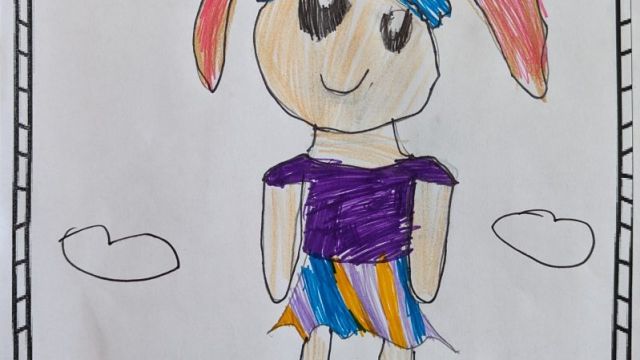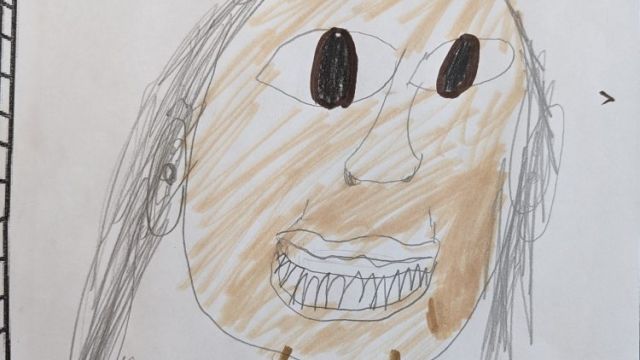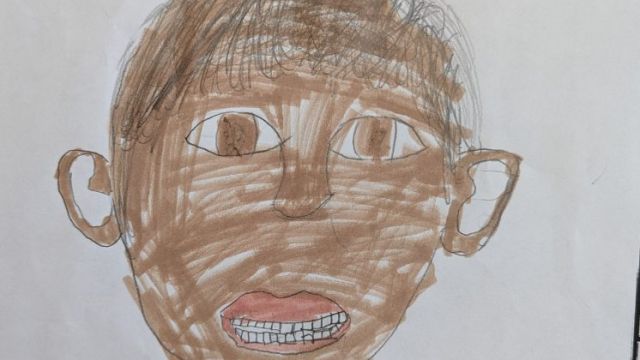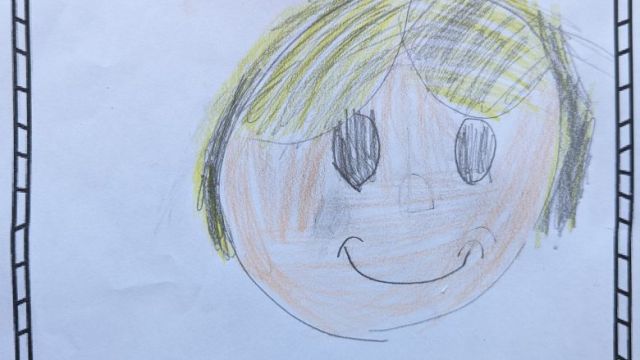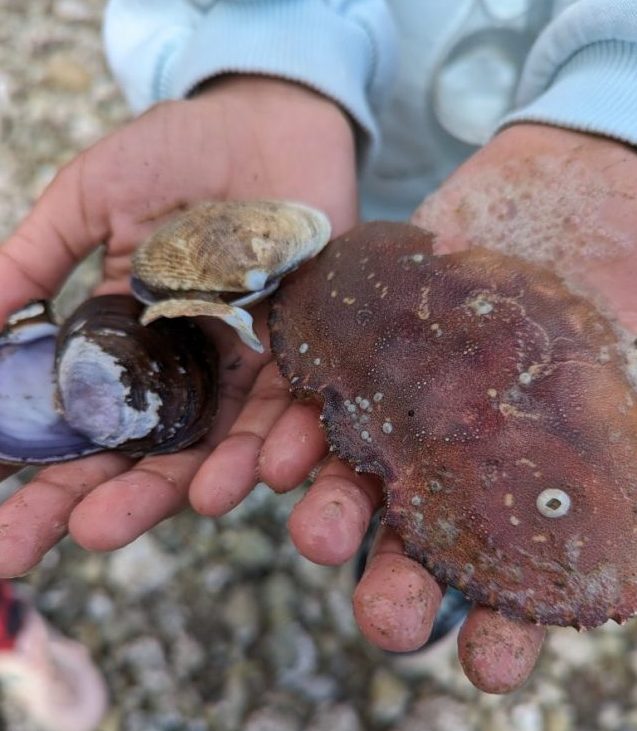 Students had a fantastic time exploring Barnet Marine Park last week. They spotted crabs, jellyfish, seagulls, and sea stars. While it was high tide, Division 10 was nevertheless was engaged in exploring throughout the day.
Students had a fantastic time exploring Barnet Marine Park last week. They spotted crabs, jellyfish, seagulls, and sea stars. While it was high tide, Division 10 was nevertheless was engaged in exploring throughout the day.
We used field guides to try to identify different shells. Could it be oyster, mussel, limpet, or clam? Some students noted the foam at the seashore and we learned it was from decomposing algae. Others noted the different types of seaweed that had washed up. (Check out this blog if interested to learn more about seaweed!)
They learned important lessons on respecting nature, such as trying not to disturb tidal pools too much or take home too many shells or rocks that may give shelter to some animals.
Students also learned from each other, swapping facts that they knew about local plants and animals. “It was actually a fun field trip,” said one student the next day. 🙂

